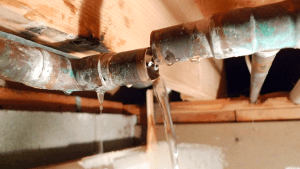Overview To Water Leakage Detection In The House
Overview To Water Leakage Detection In The House
Blog Article
They are making a few great pointers related to Locating water leaks overall in this post followed below.

Early discovery of leaking water lines can reduce a prospective catastrophe. Some small water leaks might not be visible.
1. Examine the Water Meter
Every house has a water meter. Checking it is a proven way that helps you uncover leaks. For starters, shut off all the water resources. Ensure no one will purge, make use of the faucet, shower, run the cleaning maker or dishwashing machine. From there, go to the meter and watch if it will transform. Given that nobody is using it, there must be no activities. That suggests a fast-moving leak if it relocates. Also, if you detect no changes, wait an hour or 2 and check back again. This means you might have a sluggish leakage that might also be below ground.
2. Examine Water Intake
Evaluate your water bills as well as track your water usage. As the one paying it, you ought to notice if there are any kind of disparities. If you find sudden changes, despite your intake being the same, it means that you have leakages in your plumbing system. Remember, your water costs need to drop under the same range on a monthly basis. An unexpected spike in your expense shows a fast-moving leakage.
A steady rise every month, even with the very same behaviors, reveals you have a slow-moving leakage that's additionally gradually intensifying. Call a plumber to completely check your property, especially if you feel a cozy location on your flooring with piping below.
3. Do a Food Coloring Examination
When it concerns water usage, 30% comes from bathrooms. Examination to see if they are running effectively. Decrease specks of food shade in the tank as well as wait 10 minutes. If the color somehow infiltrates your bowl during that time without flushing, there's a leakage in between the tank and bowl.
4. Asses Outside Lines
Do not neglect to examine your exterior water lines also. Should water seep out of the connection, you have a loose rubber gasket. One tiny leakage can throw away loads of water as well as spike your water bill.
5. Evaluate as well as Assess the Circumstance
Property owners should make it a routine to examine under the sink counters as well as also inside cabinets for any type of bad odor or mold and mildew growth. These 2 warnings suggest a leakage so timely attention is needed. Doing regular assessments, even bi-annually, can conserve you from a significant problem.
If you recognize your home is already old, maintain a careful eye on your heaters, hoses, pipes and so on. Look for stainings and compromising as a lot of home appliances and also pipelines have a life span. They will certainly additionally normally wear away as a result of damage. If you presume leaking water lines in your plumbing system, don't wait for it to escalate. Call a specialist plumber right away so you don't end up with a terrible mess in your house.
Early detection of dripping water lines can mitigate a possible calamity. Some small water leakages might not be visible. Examining it is a guaranteed means that helps you discover leakages. One small leakage can lose loads of water and increase your water expense.
If you think dripping water lines in your plumbing system, don't wait for it to intensify.
WARNING SIGNS OF WATER LEAKAGE BEHIND THE WALL
PERSISTENT MUSTY ODORS
As water slowly drips from a leaky pipe inside the wall, flooring and sheetrock stay damp and develop an odor similar to wet cardboard. It generates a musty smell that can help you find hidden leaks.
MOLD IN UNUSUAL AREAS
Mold usually grows in wet areas like kitchens, baths and laundry rooms. If you spot the stuff on walls or baseboards in other rooms of the house, it’s a good indicator of undetected water leaks.
STAINS THAT GROW
When mold thrives around a leaky pipe, it sometimes takes hold on the inside surface of the affected wall. A growing stain on otherwise clean sheetrock is often your sign of a hidden plumbing problem.
PEELING OR BUBBLING WALLPAPER / PAINT
This clue is easy to miss in rooms that don’t get much use. When you see wallpaper separating along seams or paint bubbling or flaking off the wall, blame sheetrock that stays wet because of an undetected leak.
BUCKLED CEILINGS AND STAINED FLOORS
If ceilings or floors in bathrooms, kitchens or laundry areas develop structural problems, don’t rule out constant damp inside the walls. Wet sheetrock can affect adjacent framing, flooring and ceilings.
https://www.servicemasterbyzaba.com/blog/how-to-detect-water-leakage-in-walls/

As a fervent reader about Detecting hidden plumbing leaks, I assumed sharing that piece of content was worth the trouble. Appreciated our write-up? Please share it. Let another person find it. Thank you so much for taking the time to read it.
Report this page